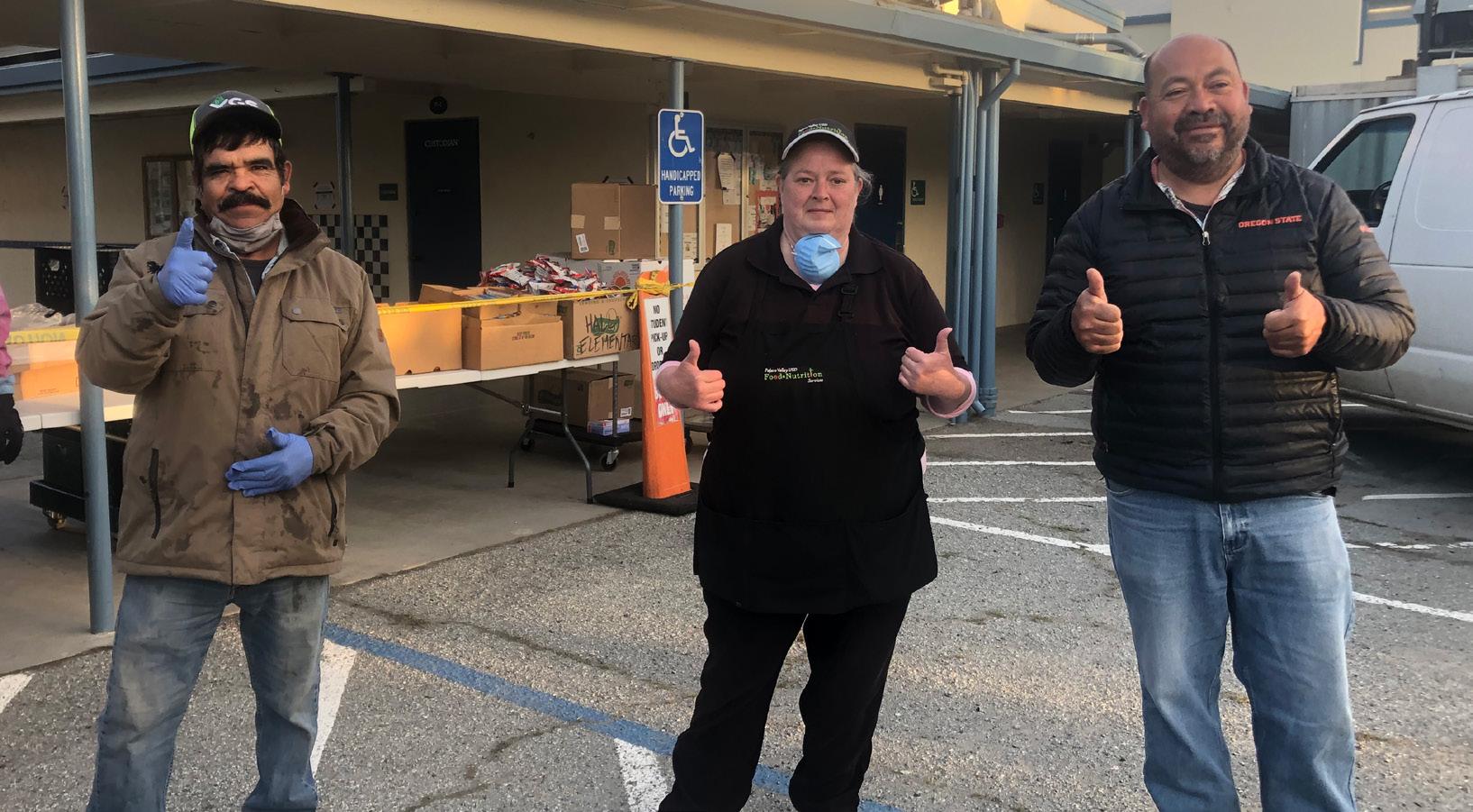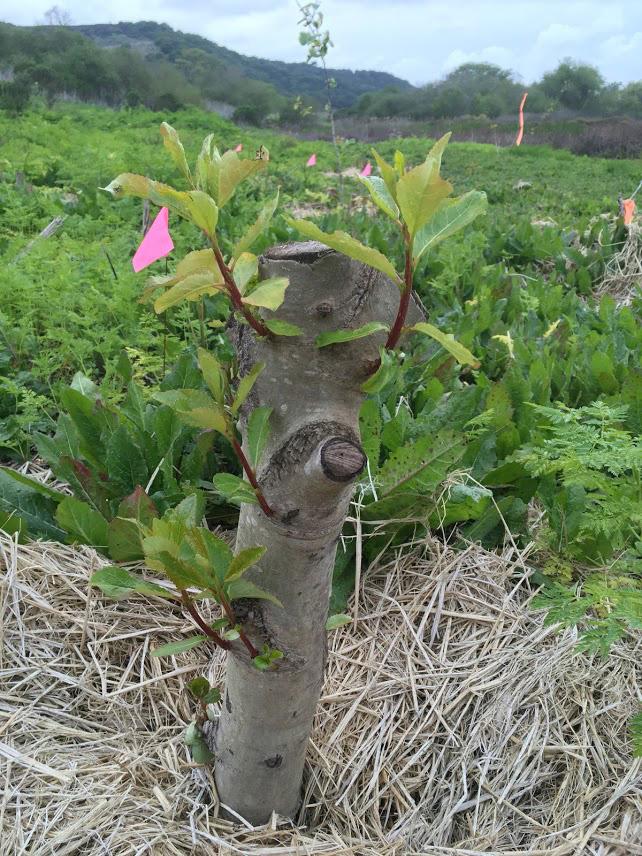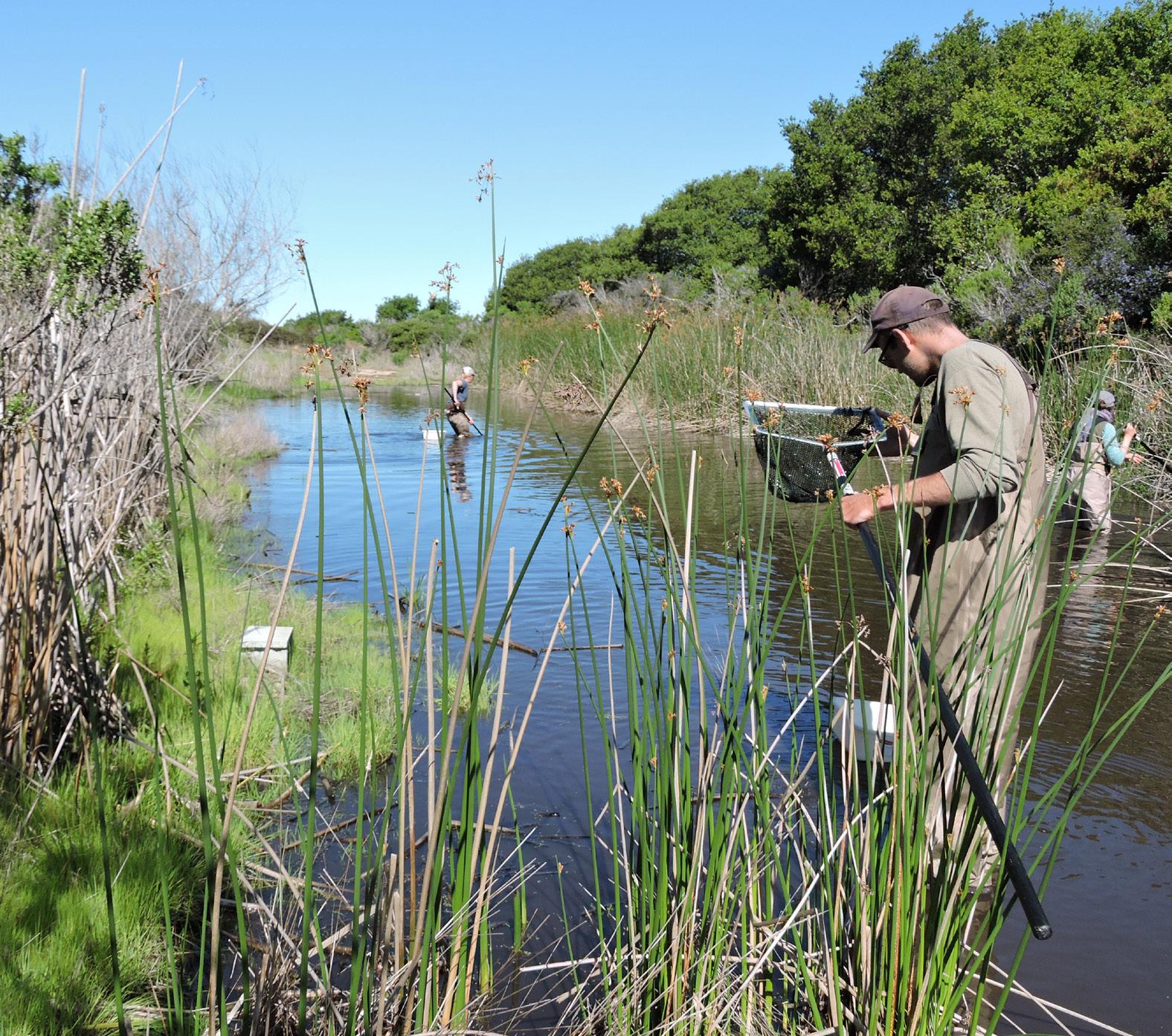DIPNETS & DNA Each spring, freshwater ponds appear throughout the Elkhorn Slough watershed. The life that thrives in these ponds borders on magical: otherworldly crustaceans like clam shrimp and fairy shrimp; strange aquatic insects like diving beetles, backswimmers, water boatmen, damselflies; and, of course, various developmental stages of larval salamanders and tadpoles (with or without lungs, legs, and tails, depending on species and timing). Whether hatching from newly laid eggs or awakening from dormant cysts, these fantastic creatures seemingly materialize from nowhere when the seasonal waters bring them to life. Endangered California tiger-salamanders and Santa Cruz long-toed salamanders, threatened California redlegged frogs, as well as more ubiquitous Sierran tree frogs (also known as Pacific tree frogs or Pacific chorus frogs) are among the amphibians that lay their eggs, singly or in masses, in these ephemeral ponds. One reason native amphibians favor such ponds is because many aquatic predators that might otherwise devour their eggs and larvae — such as fish and non-native bullfrogs— cannot survive in waters that dry up by late summer. This is also a reason researchers have such a brief window to study these amazing creatures. Each year around early April, Reserve researchers take advantage of their fleeting opportunity to document the health of some of the watershed’s most endangered species: the amphibians of Elkhorn Slough. Since 1997, Reserve 4
n
tidal exchange
researchers have donned waders and grabbed dipnets to record the habitat quality, distribution, relative abundance, and diversity of amphibians at approximately 40 sites on Reserve, Foundation, and privately-held lands. In addition to netting larval forms, Reserve researchers use a variety of methods to monitor amphibians — including daytime surveys to assess pond size and habitat quality, pit trap and coverboard surveys, evening listening surveys to identify sites used by breeding frogs, and nighttime eye-shine surveys to assess adult population size. This year, shelter-in-place restrictions prompted Reserve researchers to postpone a new monitoring technology they look forward to implementing in coming seasons: environmental DNA (eDNA) surveys. With eDNA surveys, researchers will collect water samples from various pond sites and, from cells shed in that water, can run DNA assays to detect and identify the types of amphibians inhabiting each pond. Their findings will guide scientists and wildlife managers in conserving endangered amphibians and their habitats. We’re grateful for your contributions to the Elkhorn Slough Foundation, which support amphibian monitoring, conserve freshwater wetlands, restore habitat, and reduce erosion to improve water quality. n (clockwise from top left) ESF Stewardship Director Dash Dunkell joins Reserve researchers Susie Fork and Inger Marie Laursen on a dipnetting survey of Vista Pond on ESF’s Sand Hill Farm; Sierran tree frogs were among the amphibians surveyed; gills fringe the heads of endangered California tiger salamander larvae.






